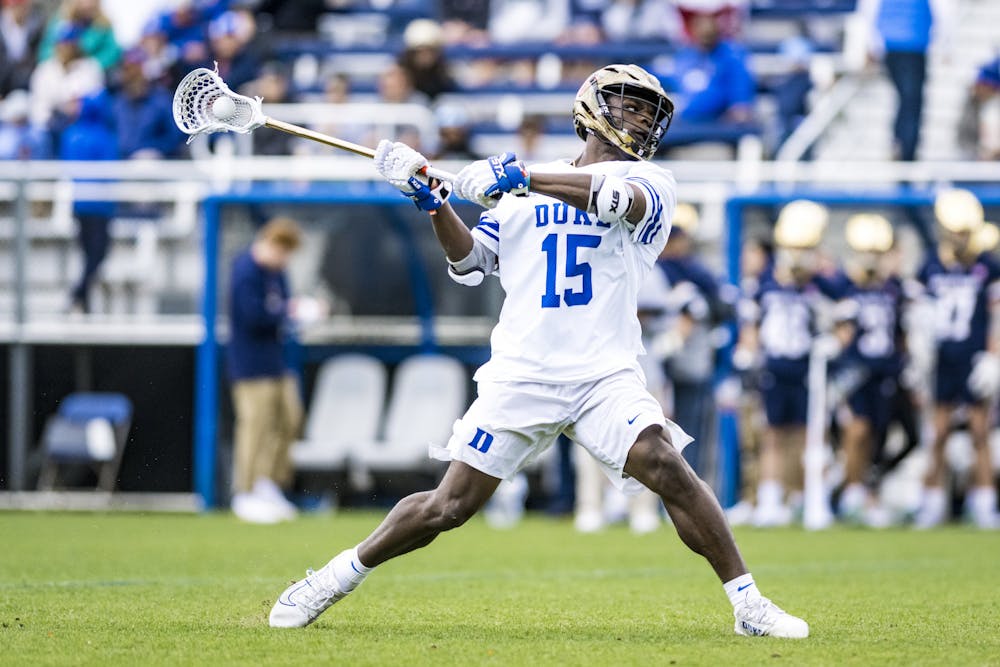That was rather unceremonious, wasn’t it?
Missing the postseason is certainly unceremonious, but for Duke, a storied men’s lacrosse program with three national titles, Division 1’s all-time winningest coach and the top recruits in the 2020 and 2021 classes on its roster, it’s monumental for all the wrong reasons.
The Blue Devils were trapped in purgatory ahead of Sunday’s selection show. Having dismantled preseason top dog Virginia by nine goals and beaten rival North Carolina twice by a combined 17 goals, the talent of this group was evident.
It lost six games, though. An early defeat to Penn—the recently crowned Ivy League champions and No. 3-seed for the tournament—and a pair of losses to Notre Dame were understandable and, to some extent, rational. Losses against Syracuse, Loyola and Jacksonville, with due respect, were not.
The problem with this inconsistency was that it became difficult to figure out how good this Duke team actually was. When the postseason loomed and eight at-large bids were at stake, that problem turned into a bonafide catastrophe for the Blue Devils.
The NCAA selects its tournament teams for men’s lacrosse based on a variety of factors, presumably including RPI, a ratings system that takes strength of schedule and those of a team’s opponents into account. Teams who play the greatest number of difficult games have the highest RPIs, and more often than not those teams make the postseason. It’s important to note that RPI is an interesting choice for lacrosse in the first place since there are so few games in a season.
The men’s tournament field is notoriously small, sitting at just 18 teams. Ten of these are determined from automatic bids, usually the winners of various conference tournaments. The other eight are determined by a selection committee, which, with qualified teams excluded, selects the remaining eight teams.
Duke was ranked No. 7 in RPI. With Penn already qualified, that moved Duke up to sixth in line. Add in Maryland’s Big Ten win, and it was fifth. But by the time the entire field was revealed, head coach John Danowski and his Blue Devils were notably absent.
That exclusion from the tournament field might be for a variety of reasons. On one hand, Duke didn’t put itself in a position to be a tournament lock. In a must-win game against Notre Dame on the last day of the regular season, it squandered a 14-10 lead to lose 16-14 after a scoreless fourth quarter. Had it won, this conversation would likely be quite different.
I’ll hold my hands up and admit that my preseason judgments were a tad optimistic, predicting the Blue Devils to be national champions. But Duke didn't win the games it needed to and still wound up among the top teams in RPI, and it didn't seem to matter.
If Sunday showed us anything, it’s that not only is RPI inaccurate and determined on an insufficient sample but that the body that uses it to form its postseason bracket does so inconsistently and selectively.
The Ivy League was good this season, but it shouldn’t have six teams competing for the title in East Hartford, Conn., later this month. Duke, and especially Notre Dame, will no doubt feel aggrieved that Harvard, a team that sat 15th in RPI Sunday, made it ahead of either one. The Fighting Irish closed out the season on a six-game win streak and gave Maryland its closest run of the campaign, losing by just two. While Duke not making the NCAA tournament may be understandable, Notre Dame missing out is inexcusable.
The point is this: First and foremost, Duke will not play this postseason. Part of this is its own fault, but it’s also because of the gross incongruence of a metric that is outwardly meant to streamline the selection process and root a subjective system in statistics. Instead, the NCAA snubbed two lacrosse behemoths, both of whom could have won a title, represented only one ACC team and, most ironically, broke its own precedent.
The Blue Devils should be preparing for a few more games, but are instead done for the season. Notre Dame is in the same position. For Danowski, star goalie Mike Adler is gone, Nakeie Montgomery is likely a top-10 pick in the PLL Draft and a slew of other graduate students like Cameron Badour, Joe Robertson and Sean Lulley logged their last minutes in a Duke shirt, all because at the end of the day, RPI didn't matter and Duke didn't get its opportunity at the NCAA tournament.
Rather unceremonious, indeed.
Get The Chronicle straight to your inbox
Signup for our weekly newsletter. Cancel at any time.

Andrew Long is a Trinity senior and recruitment/social chair of The Chronicle's 120th volume. He was previously sports editor for Volume 119.

